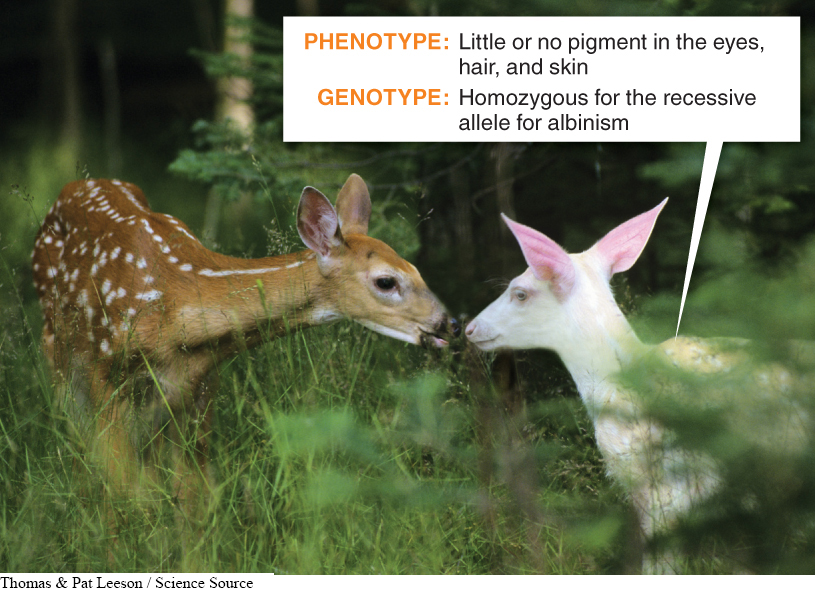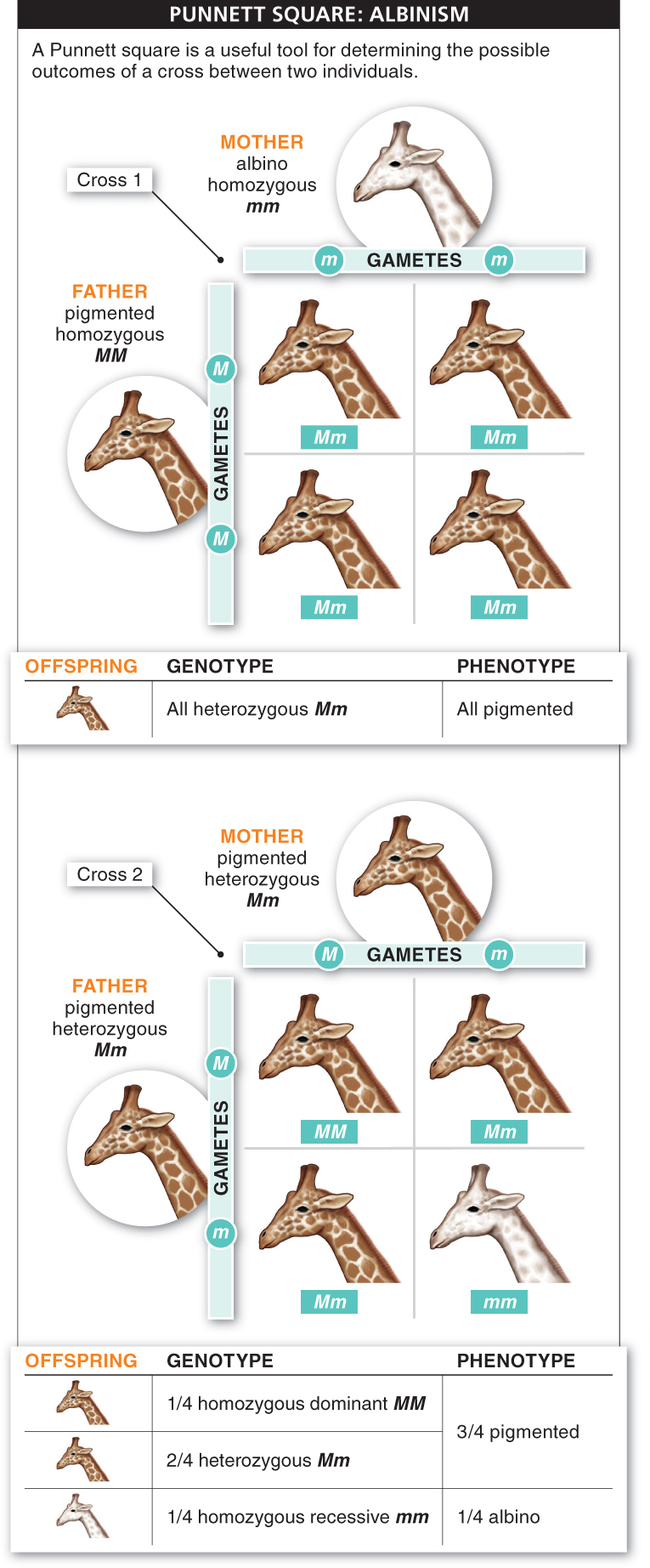Things are not always as they appear. Take skin coloration, for example. Humans and many other animals have a gene that contains the information for producing melanin, one of the chemicals responsible for giving our skin its coloring (FIGURE 7-11). This gene is one of many that influence skin color. Unfortunately, there is also a defective, non-

The inability to deduce an individual’s genetic makeup through simple observation is a general problem in genetics: physical appearances don’t necessarily reflect the underlying genes. A normally pigmented individual may carry two copies of the pigment-
Underlying the phenotype is the genotype. This is an organism’s genetic composition. We usually speak of an individual’s genotype in reference to a particular trait. For example, an individual’s genotype might be described as “homozygous for the recessive allele for albinism,” meaning that the person has two recessive alleles of the gene. Another individual’s genotype for the melanin gene might be described as “heterozygous” (a recessive allele and a dominant allele.) Occasionally, the word “genotype” is also used as a way of referring to all of the genes an individual carries.
When an organism exhibits a recessive trait, such as albinism, we know with certainty what its genotype is for the melanin gene. When it shows the dominant trait, on the other hand, it’s impossible to distinguish whether the organism carries two copies of the dominant allele (homozygous dominant) or carries one copy of the dominant allele and one of the recessive (heterozygous). Because it’s not possible to discern the genotypes of two individuals with the same phenotype just by looking at them, much of genetic analysis must make use of clever experiments and careful record-
To analyze and predict the outcome of crosses, first we must assign symbols to represent the different variants of a gene. Generally we use an uppercase letter for the dominant allele and lowercase letter for the recessive allele. In the case of pigmentation/albinism, we use the letter “m” because the trait is caused by the gene carrying instructions for production of the pigment melanin. We represent the genotype of the albino giraffe as mm, because that individual must carry two copies of the recessive allele, m. A giraffe that is pigmented must have the genotype MM or Mm. If we don’t know which of the two possible genotypes the pigmented individual has, we can write M_ where _ is a placeholder for the unknown second allele.
We can trace the possible outcomes of a cross between two individuals using a handy tool called the Punnett square. In FIGURE 7-12 we illustrate the cross between a true-

287
In the four cells of the Punnett square, we enter the genotypes of all the possible offspring resulting from our cross. Each cell contains one allele given at the head of the column and one allele at the left of the row. In Cross 1 illustrated in Figure 7-
In the bottom half of Figure 7-
TAKE-HOME MESSAGE 7.5
It is not always possible to determine an individual’s genetic makeup known as its genotype, by observation of the organism’s outward appearance, known as its phenotype. For a particular trait, an individual may carry a recessive allele whose phenotypic effect is masked by the presence of a dominant allele. Much genetic analysis makes use of clever experiments and careful record-
What is listed across the axes of a Punnett square? What is listed inside the boxes of a Punnett square?
A Punnett square can be used to determine the possible outcomes of a cross between two individuals. The genotypes of the gametes these individuals can produce are listed across the axes, and the genotypes of their potential offspring are listed inside the boxes of the Punnett square.
288